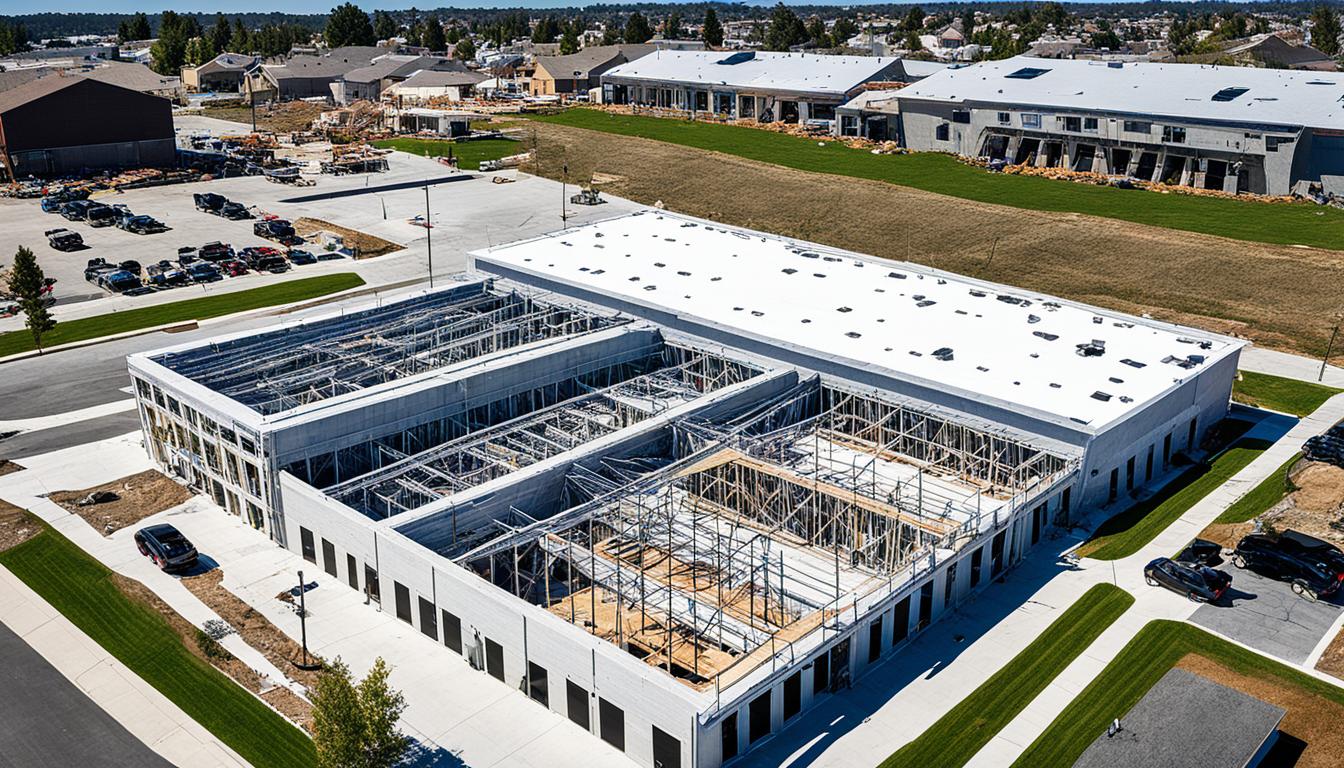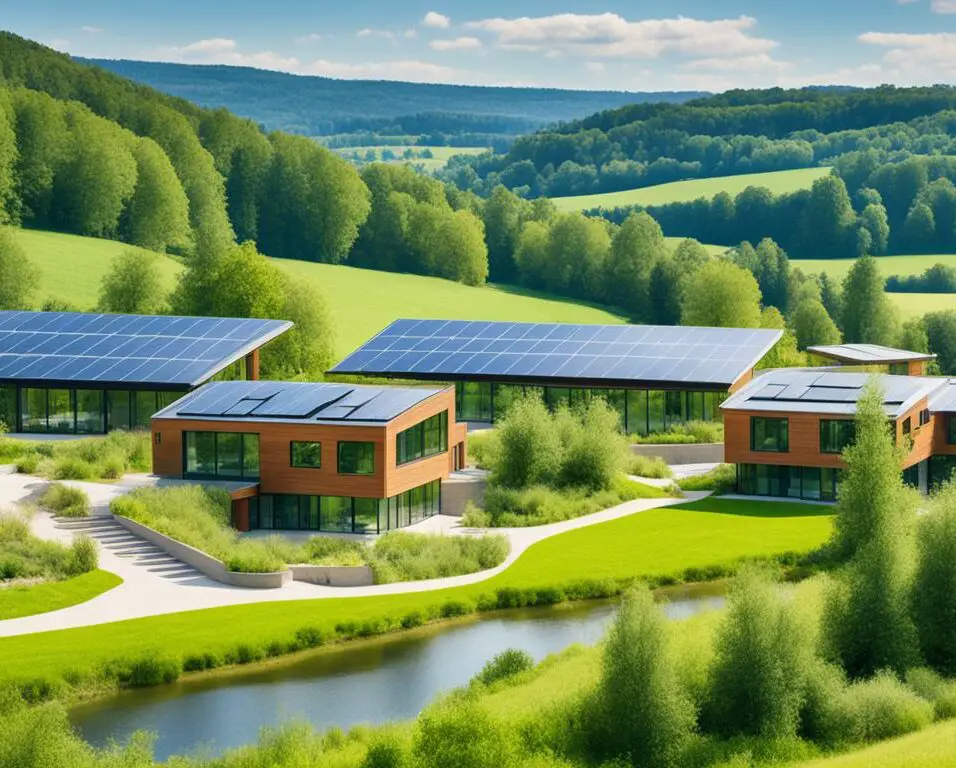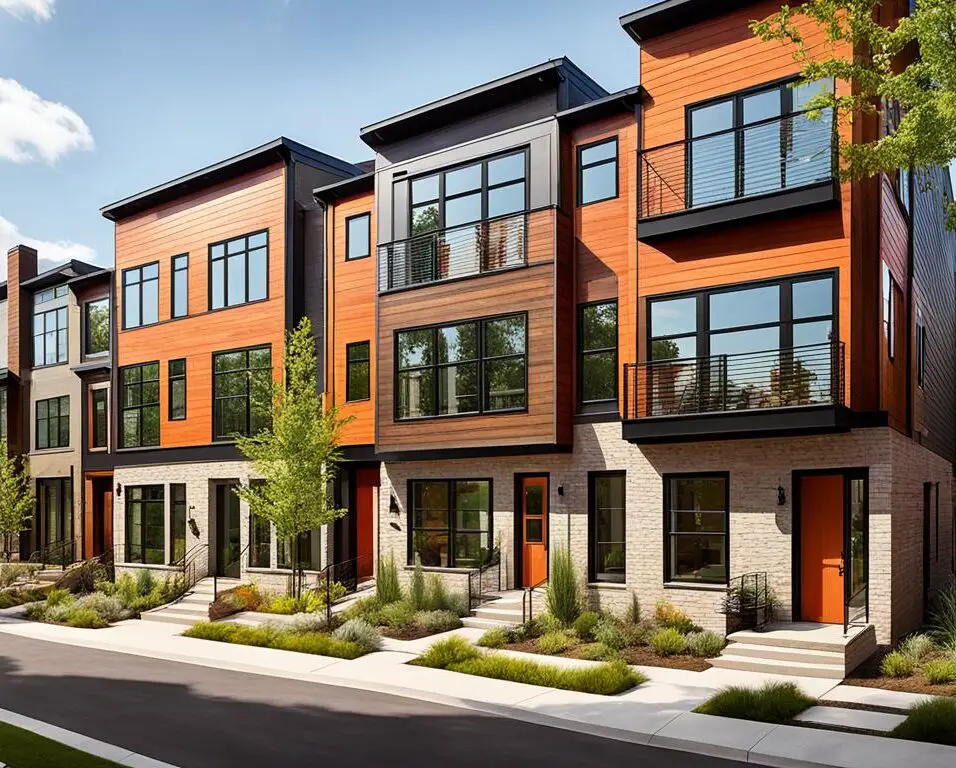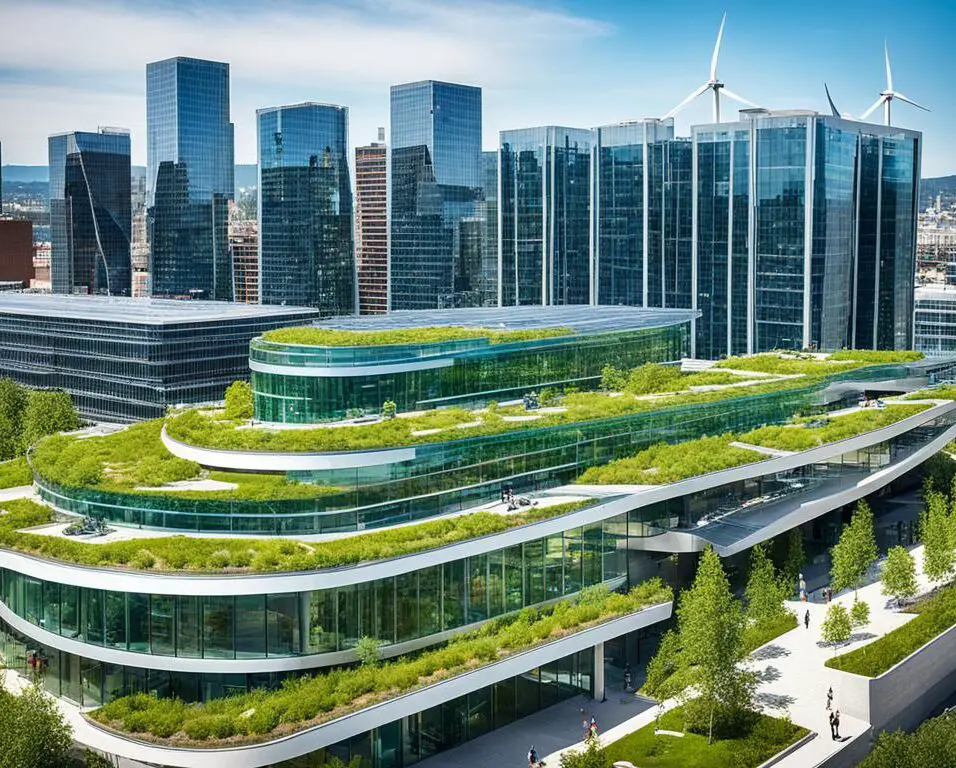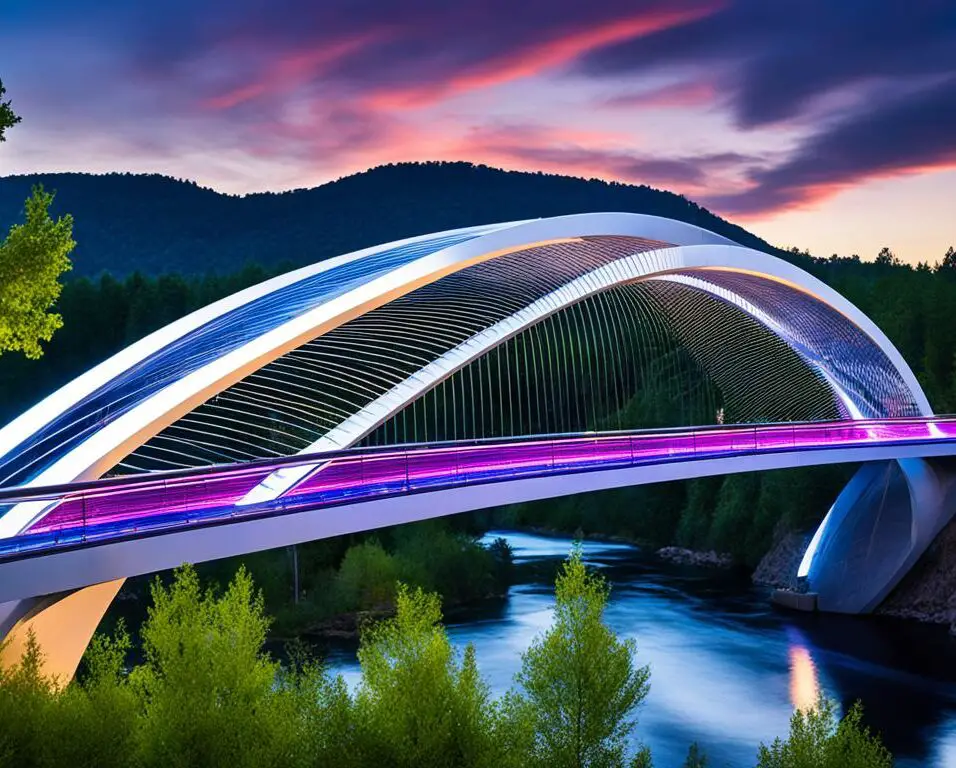Designing Disaster-Resistant Buildings for a Safer Tomorrow
Disaster-resistant buildings hold the key to a safer and more resilient future. As natural calamities continue to pose significant threats, it is imperative that we prioritize the design and construction of structures that can withstand their devastating forces. Architects, armed with advanced design techniques and innovative materials, are at the forefront of creating buildings that prioritize safety, resilience, and longevity.
By incorporating principles of structural engineering, materials science, and technology, architects are able to create disaster-resistant buildings that can withstand the impact of earthquakes, hurricanes, floods, and other natural disasters. With an unwavering commitment to safety, they constantly push the boundaries of design and construction, ensuring that buildings not only protect lives but also minimize damage to property.
Design strategies for disaster-resistant buildings encompass a range of approaches. From reinforced foundations to the use of flexible materials and advanced structural systems, these buildings are built to withstand severe winds, flooding, and ground shaking. Additionally, the integration of innovative materials like carbon fiber and composite materials further enhances the structure’s resilience.
Key Takeaways:
- Disaster-resistant buildings are crucial in minimizing the impact of natural calamities.
- Architects utilize principles of structural engineering, materials science, and technology to design and construct these buildings.
- Reinforced foundations, flexible materials, and advanced structural systems enhance the resilience of disaster-resistant buildings.
- Innovative materials like carbon fiber and composites contribute to the strength and durability of these structures.
- By investing in disaster-resistant buildings, we can create a safer and more resilient built environment for future generations.
The Importance of Disaster-Resistant Buildings
Disaster-resistant buildings play a critical role in safeguarding lives and minimizing damage during natural calamities such as earthquakes, hurricanes, and floods. With their robust design and construction, these structures offer essential protection and safety to occupants, ensuring their well-being even in the face of extreme events.
When faced with natural disasters, such as severe winds, flooding, or ground shaking, disaster-resistant buildings prove their efficacy. These structures are specifically engineered to withstand the forces exerted by such events, ensuring the safety of those inside. Features like reinforced foundations, flexible materials, and advanced structural systems provide a strong defense against the destructive power of nature.
Disaster-resistant buildings are the result of meticulous planning and design, prioritizing safety and resilience. By incorporating innovative strategies, architects and engineers create structures that can withstand the rigors of natural calamities and protect lives.
Let’s take a closer look at the three key elements that contribute to the efficacy of disaster-resistant buildings:
Reinforced Foundations
The foundation of a disaster-resistant building is its first line of defense. These structures incorporate deep and robust foundations that can withstand the forces exerted by natural disasters. By distributing the load evenly and transferring it to the underlying soil or rock, reinforced foundations ensure stability and prevent catastrophic failures.
Flexible Materials
Flexibility is a vital characteristic of disaster-resistant buildings. By using materials that can deform without losing their structural integrity, these buildings can better withstand the impact of natural disasters. For example, steel and reinforced concrete are commonly used due to their ability to bend and absorb energy, reducing the risk of collapse.
Advanced Structural Systems
Technological advancements have led to the development of sophisticated structural systems that enhance the resilience of disaster-resistant buildings. These systems employ techniques such as damping devices, base isolators, and tuned mass dampers to dissipate and absorb the energy generated during natural calamities, minimizing the impact on the overall structure.
The combination of reinforced foundations, flexible materials, and advanced structural systems ensures that disaster-resistant buildings can provide safety and protection in the face of natural calamities. By withstanding severe winds, flooding, and ground shaking, these structures offer a secure environment for their occupants, mitigating the devastating effects of natural disasters.
| Benefits of Disaster-Resistant Buildings | How They Provide Safety and Protection |
|---|---|
| Minimize loss of life | Designed to withstand severe winds, flooding, and ground shaking |
| Reduce property damage | Employ reinforced foundations, flexible materials, and advanced structural systems |
| Maintain essential services | Can withstand the impact of natural disasters without compromising functionality |
| Ensure continuity of operations | Enable faster recovery and resumption of normal activities |
Design Strategies for Disaster-Resistant Buildings
Designing disaster-resistant buildings is a complex process that requires a multidisciplinary approach. Architects combine principles from structural engineering, materials science, and technology to create structures that can withstand the forces of natural disasters and enhance resilience.
One of the key aspects of designing a disaster-resistant building is to analyze the potential impact of natural disasters on its design. Architects utilize advanced modeling and simulation techniques to predict how the structure will respond to various hazards. This allows them to make necessary adjustments and incorporate features that will enhance the building’s resilience.
Flexible joints are one such feature that architects often incorporate into the design. These joints allow the building to sway and absorb the energy during events like earthquakes or strong winds, reducing the stress on the overall structure. Reinforced concrete is another important element that improves the building’s resilience by providing additional strength and durability.
Impact-resistant windows are also vital in disaster-resistant building design. These windows are made of specialized materials that can withstand the impact of flying debris during hurricanes or storms, keeping the building intact and protecting its occupants.
Strategically placed reinforcements, such as brace frames or shear walls, are essential for strengthening the structure and improving its ability to withstand lateral forces. These reinforcements are strategically placed in areas that are susceptible to high winds or seismic activity, providing additional stability.
Furthermore, the use of innovative materials has revolutionized disaster-resistant building design. Carbon fiber, for example, is a lightweight and high-strength material that can significantly enhance the structure’s resilience. Composite materials, which consist of a combination of different materials, also offer improved durability and resistance to extreme conditions.
In summary, the design strategies employed in disaster-resistant buildings focus on enhancing resilience through the incorporation of flexible joints, reinforced concrete, impact-resistant windows, strategically placed reinforcements, and innovative materials. By combining principles from structural engineering, materials science, and technology, architects can create buildings that are better equipped to withstand the forces unleashed by natural disasters.
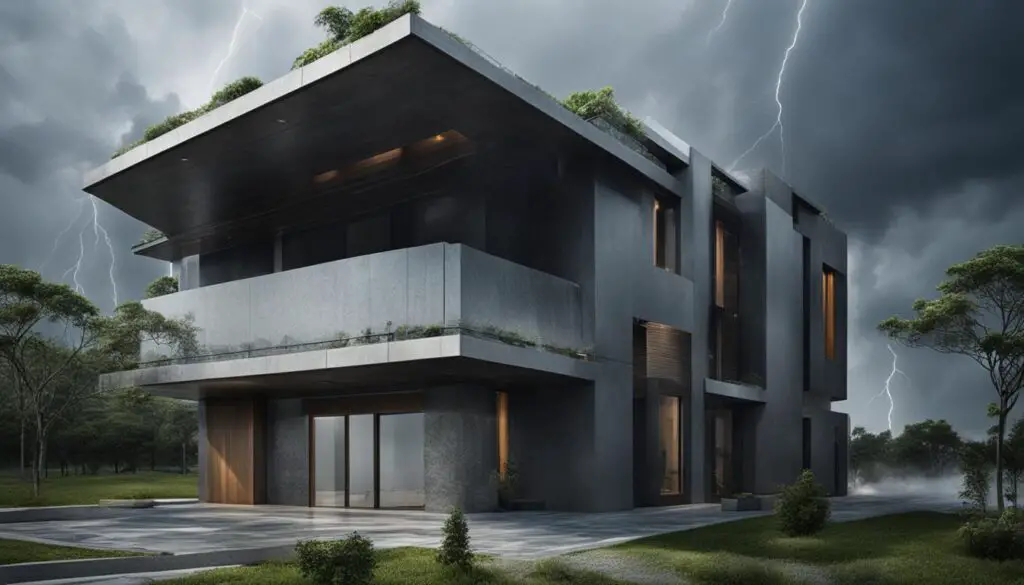
Key Design Strategies
- Advanced modeling and simulation techniques
- Flexible joints and reinforced concrete
- Impact-resistant windows
- Strategically placed reinforcements
- Innovative materials like carbon fiber and composites
Future Trends in Disaster-Resistant Building Design
The future of disaster-resistant building design is heavily influenced by technological advancements. Artificial intelligence (AI) plays a significant role in predicting and mitigating the effects of natural disasters. AI algorithms can analyze data from sensors placed in buildings to detect vulnerabilities and dynamically adjust the structural response to enhance safety. Automation is also being integrated into building systems, allowing for quick and efficient evacuation procedures during emergencies. Additionally, sustainability is a key consideration, with buildings designed to be eco-friendly and energy-efficient while maintaining their resilience against natural hazards.
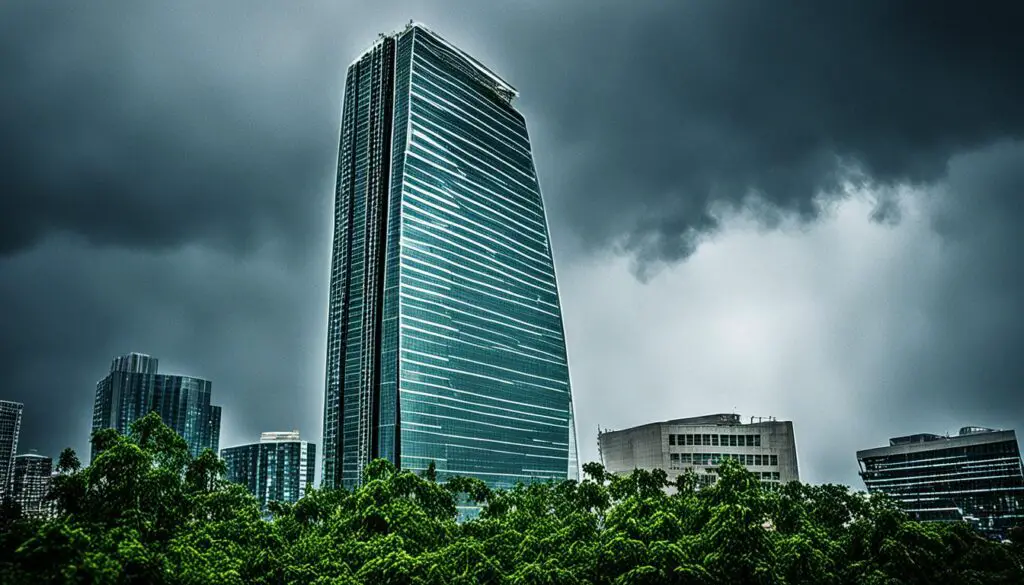
Technological Advancements in Disaster-Resistant Building Design
The integration of artificial intelligence in disaster-resistant building design brings numerous benefits. AI algorithms can process vast amounts of data collected from various sensors, enabling quick identification of potential vulnerabilities and areas of improvement within the building’s structure. By identifying weak points, architects and engineers can strategically strengthen these areas to enhance the overall resilience of the building.
“Artificial intelligence is a game-changer in disaster-resistant building design. Its ability to analyze data and detect vulnerabilities helps us create structures that can better withstand natural calamities.” – John Adams, Architect
Automation for Enhanced Safety and Efficiency
The integration of automation systems in disaster-resistant buildings enables swift and efficient response during emergencies. Automated evacuation systems, equipped with sensors and real-time data analysis, can guide occupants to safety, reducing the risk of injuries and fatalities. These systems can also provide crucial information to emergency responders, ensuring a coordinated and effective rescue operation.
Prioritizing Sustainability in Building Design
In the pursuit of disaster resilience, sustainable practices are gaining prominence in building design. Architects and engineers are incorporating eco-friendly materials, energy-efficient technologies, and green building strategies to create disaster-resistant buildings that have minimal impact on the environment. By embracing sustainability, these buildings contribute to a more sustainable future while providing the necessary protection against natural hazards.
| Benefits of Future Trends in Disaster-Resistant Building Design |
|---|
| Incorporation of artificial intelligence enhances predictive capabilities and strengthens building structures. |
| Automation systems enable quick and efficient evacuation procedures during emergencies. |
| Sustainable design practices contribute to eco-friendly and energy-efficient buildings. |
| Overall reduction in the impact of natural calamities on both occupants and the environment. |
Conclusion
Disaster-resistant buildings are pivotal in shaping a safer and more resilient future. By implementing meticulous design strategies that prioritize safety and resilience, architects have the ability to mitigate the impact of natural calamities and safeguard lives. Through constant research and innovation, as well as the integration of advanced technologies like artificial intelligence, the evolving landscape of disaster-resistant building design holds immense potential.
By actively incorporating design strategies that focus on safety and resilience, such as reinforced foundations, flexible materials, and technologically advanced structural systems, architects can create buildings that are better equipped to withstand and adapt to changing environmental conditions. These structures not only ensure the safety of occupants during natural disasters like earthquakes, hurricanes, and floods but also offer protection to communities at large.
The integration of artificial intelligence, combined with the use of automation in building systems, further enhances the safety and efficiency of disaster-resistant buildings. AI algorithms can analyze sensor data to detect vulnerabilities and adjust structural responses in real-time. Additionally, sustainable practices are being integrated into design strategies, leading to eco-friendly and energy-efficient buildings that remain resilient in the face of natural hazards.
Looking to the future, continual research and innovation in the field of disaster-resistant building design will allow us to further enhance the safety and resilience of our built environment. By collectively prioritizing safety, resilience, and design strategies, we can ensure that buildings can withstand and adapt to the ever-changing challenges posed by natural disasters, creating a safer and more resilient world for generations to come.



